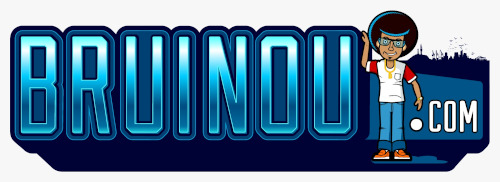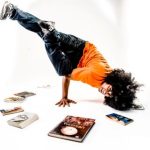Heritage Day 2023 turned out to be one of the most interesting I’ve experienced even though I had no events to host or attend, and thankfully so, because Cape Town is drenched with rain and having a braai at home was not an option either, but I spent a fair portion of my day having really lekke phone conversations with some lekke people about the topic that, for some who are classified as Coloured, has more questions than answers and for others it is as simple saying that it is what they live…
What is Coloured Culture or What is Coloured Heritage?
Instead of telling you all of the things that people consider to be Coloured Culture or Coloured Heritage, I will randomly intersperse my Heritage Day story of how Sebastian van Niel, Henry Bekker and Lukretia Booysen added to my own understanding of this day with pictures using captions to describe a few of our various cultural expressions that can be considered to be part of our collective heritage.
The pictures I share are by far not even close to the entirety of our Cultural Heritage and please bear in mind that not all people classified as Coloured will necessarily share an affinity for all the same forms of cultural expression.

The Right Answers Are Those That Lead to More Questions
Many are grappling with the questions: What must I wear for heritage day?
What are Coloured people supposed to be doing on Heritage Day?
Others are asking: Why is so-and-so as a Coloured wearing this, that or the other African culture’s traditional clothes and not wearing “something Coloured”.
As hopefully most of you reading this already know, South Africa’s Coloured Population Group has the most diverse DNA in the world and we can go into long lengths about how we came into existence, at what expense and how a large portion of us have had our ancestral identities wiped from our collective consciousness, but that is not at all why I’m sitting at my desk contemplating my very interesting day while a storm is raging around my little abode.

I am not at all in any way presuming that I have the right answers to all these many questions and the thoughts that I share here might lead us to even more questions.
In fact, that is what I am hoping for.
When I say Djy hêrit, Gebore mêrit…
We should all be looking at ourselves and asking the question: Wat het ek wat ek mee gebore is?
What is it that I have that I was born with? What have I been born into?
And as soon as you start finding answers, maybe you can just keep asking more questions like: What am I going to leave behind to ensure that my heritage is continued?
Almost every conversation I’ve had today started off with or ventured into what we at Bruinou.com have been preaching since this site’s inception in 2001 and as Tessa Dooms & Lynsey Chutel explain when talk about their new book COLOURED: How Classification Became Culture.
They too conclude that Coloured is a Culture, Not a Race.
OK, I just wanted to get that out of the way.
As djy daaroor wil stry, let’s leave that for another day.
Anyways, ek het ook mos al gesmaak om soos som van my vrinne somma helemaal net bokveletjies te yak, but Heritage Day in Cape Town is literally still winter no matter what you think of it being spring, and I really don’t smaak to get cold.
So I was thinking maybe wear some warm layers of normal clothes and get a bokvelletjie to wear on my head, somma lekke om my dik bos hare in toom te hou.
Eish… not even that. This weather is keeping me indoors.

The Diversity in Our Heritage is Different for Each of US
Sebastian operates his own Tour Company called Baie Lekker Touring and he has over many years evolved into somewhat of an expert on the history of our diverse heritage, particularly the history of us who have been classified as ‘Cape Coloured’. We also both happen to live in Elsies River.
In one of his recent Facebook posts he mused on some of the very questions I am pondering in this little essay of mine.
“One of the most feared questions to Coloured people is: What is your culture?”
He then offers an answer, “We are a group of people that has different backgrounds. That doesn’t make us confused, that makes us different. The difference is that nowhere else in the world do we have a more diversity in DNA!”
The two of us have talked about that too many times, so that wasn’t really what got my attention about his post.

I gave him a call today about the other part where he had what he himself called a little rant.
Why do Coloured people have a problem with Coloureds wearing bokvelletjie headbands?
“The headdress that is associated with ONLY the so-called African communities, includes the indigenous diverse Khoe, San, Xhosa, Zulu, etc.”
“Wearing these headbands on heritage day doesn’t mean you are celebrating a certain tribe or culture, but rather the acceptance of our beautiful diversity!”
So I jumped straight from the ‘Hêppie Heritage Mybroe’ pleasantries into “What kaaind with kopbandjies mybroe? What are you really saying?”
Sebastian wasn’t beating around the bush. “We are always talking about our diverse DNA but we are still thinking of ourselves as everything else but African or only having African links to Khoe and San.”
We then got into the history of Elsies River and how up until the 1940’s and early 1950’s there was a large number of Xhosa people living in Elsies River, some for generations and when Xhosa people were forcibly removed from the area to places like Langa and Gugulethu, some managed to stay in Elsies because they had either intermarried with people classified as Coloured or managed to get themselves classified as Coloured. Their offspring are still here. Not only are they among us. They are a part of us.
Back to the bokvel-kopbandjies… I mos also want one.
I realised that he was actually ‘ranting’ about much more than just a headband.
If a person who appears to be someone classified as Coloured wears Xhosa or Zulu cultural clothing, we should be celebrating their diversity and not question their ‘Colourdness’ because we have no idea who their recent or distant ancestors are and have no right to tell them who they are.

I Am an African
Today I also thought about Henry Bekker’s custom made Heritage Day Outfit he had made a few years ago and still has, so I contacted him to ask if I could use a photo of him in his outfit on our website?
What does a person who in SA is classified as Coloured but has the global perspective of being an African when abroad see as their heritage and what do they project as their culture?
An outstanding computer programmer, Henry who is originally from Oudtshoorn, has lived on the Cape Flats while studying at UWC many moons ago, moved to Joburg, then spent a number of years in the USA and currently living in South Africa, he works remotely for the German head office of a major car manufacturer and often has to spend time in Germany, aside from having travelled to and through many other countries.

Interestingly Henry’s Heritage Outfit does not allude to just one specific tribe or culture but he seems to have included multiple cultural influences.
Of course I was also drawn to his bokvel headband.
Like I said, I mos also want one.
Splendid as it is, this Mr Bekker who happens to be married to my sister, was not going to get into a complicated lengthy explanation of his outfit but he did have this to say: “I am an African. Having stayed in the USA and often spending time in Germany has made me realise that HERE IS WHERE I BELONG.”

Your Heritage is Personal
Early afternoon I called up a friend who is constantly busy doing phenomenal things in arts, culture and heritage. I did feel a tad bit guilty that it’s been a while since we had a real conversation aside from interacting via social media or sharing each other’s events info but as soon as she answered, it was as if we had just last spoken yesterday.
The Founder & Curator of the Koena Art Institute, Lukretia Booysen is an influential changemaker whose focus on Indigenous Heritage has led to her June 2023 induction as a United Nations Indigenous Fellow in Geneva.
Lukretia’s Koena Art Institue is constantly evolving with new exhibitions and art installations and often also has collaborations with performing artists in different genres
By the way, those will henceforth be regularly updated on our new Bruinou.com Events Calendar.

Considering her heritage-focussed career, one would be forgiven for thinking that Lukretia had a major event planned for the day or would be attending one. Instead she was spending time with two of her friends, enjoying Kaapse Khoi Tea, and having a relaxed conversation around their own personal heritages as well as our collective heritage.
Originally from Worcester, spending her formative years in Ravensmead, then moving to Pretoria and now back in Cape Town for the past few years, Lukretia is also well travelled and I know that she has seen a variety of ways that people who are classified as Coloured express their Cultural Heritage.
She shared with me her thoughts on how Heritage Day can be a collective expression, but that it is also important that we each consider our own Heritage and the celebration thereof as something very unique and personal.
“Heritage is not only about wearing your heritage regalia, and attending events. Heritage is also about family, the transfer of family knowledge and learning about your heritage, and if your family is not picture perfect, it can be about learning others’ heritage.”
“It could also be spending time reading about your heritage, or watching a film by yourself.”
“Regardless of how this day is spent. It’s a day of honouring who we are and celebrating what makes us African.”

My perspectives on Heritage Day have been broadened in the sense that I now realise my conversations with Sebastian, Henry and Lukretia, and also a few others just calling or taking a call from me on this cold and wet Heritage Day was indeed my own active celebration of Heritage Day.
Ja… Ek hêrit, gebore mêrit.
However it’s not only about what I am born into but what I keep alive, what I celebrate, what I build onto and what evolve into from my own heritage that will ifluence the heritage of the future once I am gone.

Near Andriesvale in the Dawid Kruiper Municipal District, Northern Cape.
Oh just by the way… There are two Khoikhoi words almost all people classified as Coloureds use almost every day. Vind uit wat daai twee woordjies is in die video se link.
WATCH: Ja-Nee, Djy Praat Eintlik Jou Khoekhoegowab Heritage






